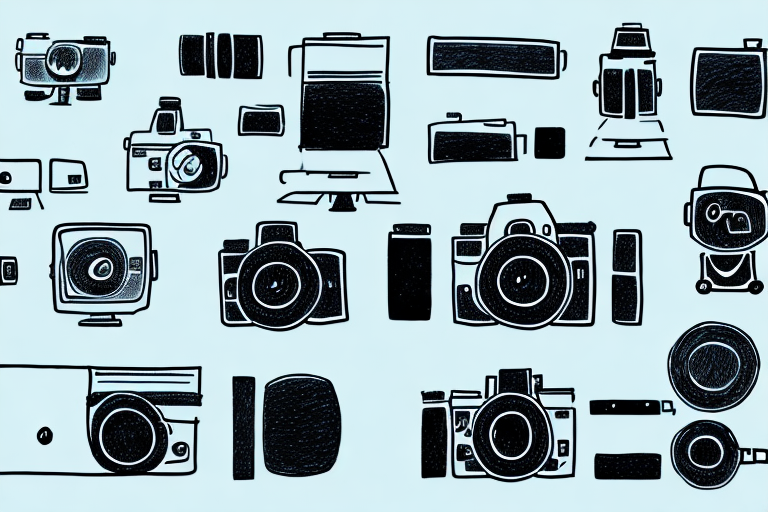Time lapse photography allows us to capture the passing of time in a visually stunning manner. From capturing the movement of clouds to the growth of plants, time lapse footage can add a unique and captivating element to our videos. One of the key factors in creating high-quality time lapse sequences is having the right camera. In this article, we will explore the various aspects to consider when choosing the best camera for time lapse photography.
Understanding the Basics of Time Lapse Photography
Before we dive into the camera selection process, it is important to have a basic understanding of time lapse photography. Time lapse photography involves capturing a series of still images over a period of time and then combining them to create a video sequence. The interval between each shot can vary depending on the desired effect, with longer intervals resulting in faster motion and shorter intervals creating a smoother, slower effect. To capture stunning time lapse footage, one must consider factors such as camera capabilities, lens selection, camera settings, and stabilization techniques. Let’s now explore the key factors to consider when choosing a camera for time lapse photography.
When choosing a camera for time lapse photography, one of the key factors to consider is the camera’s resolution. Higher resolution cameras will produce sharper and more detailed images, resulting in a higher quality time lapse video. However, it’s important to note that higher resolution cameras also require more storage space and processing power.
Key Factors to Consider When Choosing a Camera for Time Lapse
When selecting a camera for time lapse photography, there are several important factors to keep in mind. Firstly, consider the resolution of the camera. Higher resolution cameras will allow you to capture more detail in your time lapse footage, resulting in crisper and more vibrant images. Additionally, pay attention to the dynamic range of the camera. Cameras with a wide dynamic range will accurately capture both bright and dark areas in the scene, resulting in well-balanced and visually pleasing footage.
Another crucial consideration is the battery life of the camera. Time lapse sequences can require capturing hundreds or even thousands of images over an extended period. Therefore, it is important to choose a camera with a long-lasting battery or the option to use an external power source. This will ensure that your camera does not run out of power in the middle of a time lapse shoot.
Furthermore, take note of the camera’s image sensor size. Cameras with larger image sensors tend to perform better in low-light situations, allowing you to capture clear and detailed footage even in challenging lighting conditions. Lastly, consider the weight and size of the camera. If you plan on shooting time lapse sequences in different locations or while traveling, a lightweight and compact camera will be more convenient to carry and handle.
Additionally, it is important to consider the interval settings of the camera. The interval determines the time between each captured frame in the time lapse sequence. Some cameras offer a wide range of interval options, allowing you to customize the speed and duration of your time lapse footage. This flexibility can be particularly useful when capturing subjects that change rapidly or slowly over time.
Top Features to Look for in a Time Lapse Camera
In addition to the key factors mentioned above, there are specific features that can greatly enhance the capabilities of a camera for time lapse photography. One such feature is an intervalometer. An intervalometer is a built-in or external device that allows you to automate the process of capturing a series of images at set intervals. This eliminates the need for manually triggering each shot and ensures consistent timing between frames, resulting in smoother time lapse sequences.
Another useful feature to look for is the ability to shoot in RAW format. RAW files retain more information and offer greater flexibility in post-processing, allowing you to achieve the best possible results. Additionally, an electronic or silent shutter mode can be advantageous for time lapse photography, as it minimizes camera vibrations and reduces the risk of blurry images.
Furthermore, consider cameras with built-in time lapse modes or bulb ramping capabilities. Time lapse modes simplify the process of capturing time lapse footage by automatically adjusting the necessary settings, such as interval and exposure. On the other hand, bulb ramping allows for smooth transitions in exposure throughout the time lapse sequence, particularly useful for capturing scenes during changing lighting conditions, such as sunsets.
When choosing a time lapse camera, it is also important to consider the battery life. Time lapse photography often requires long periods of shooting, which can quickly drain the camera’s battery. Look for a camera with a long battery life or the option to use external power sources, such as AC adapters or power banks. This will ensure that you can capture your time lapse sequences without interruption or the need to constantly change batteries.









